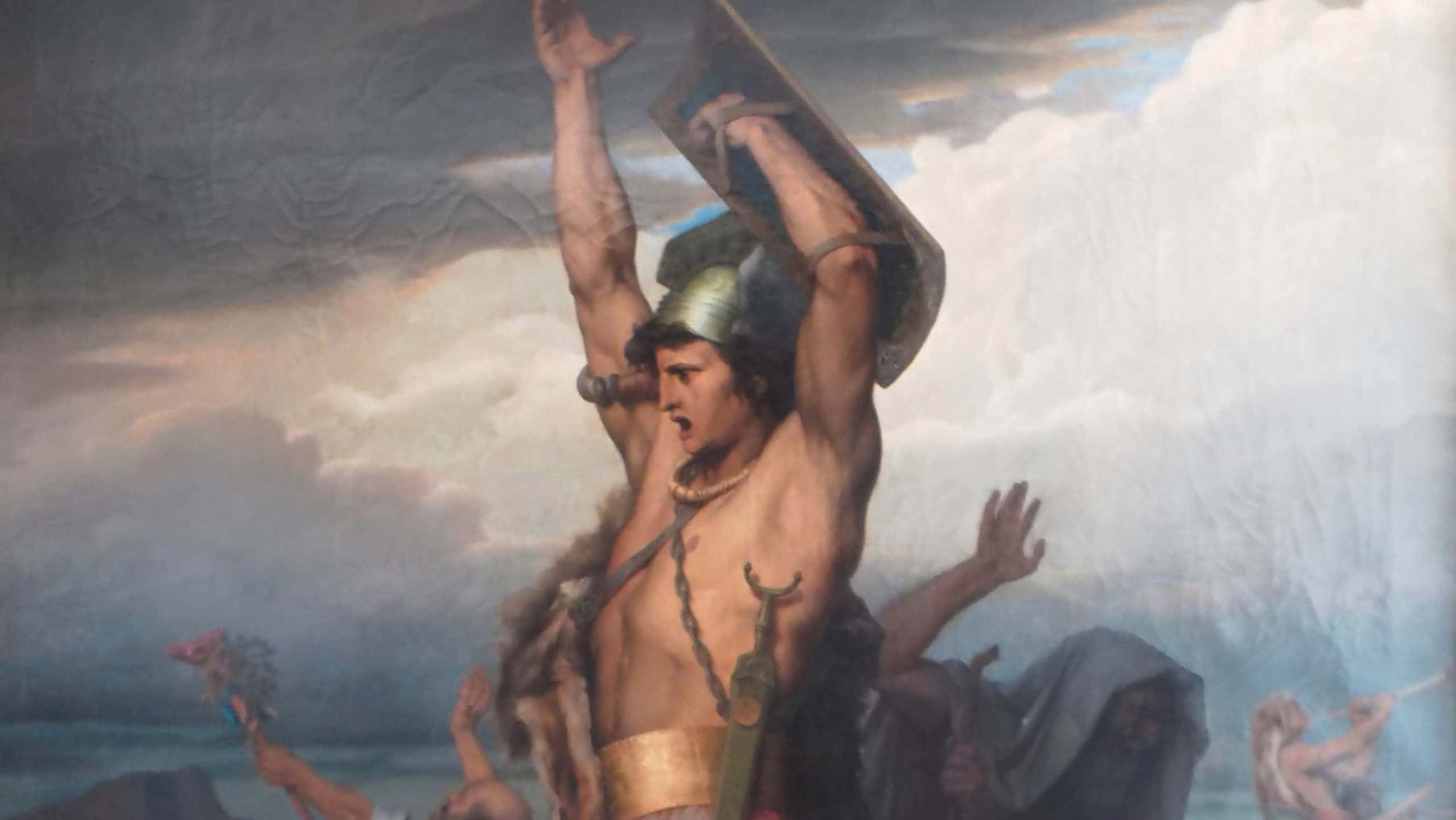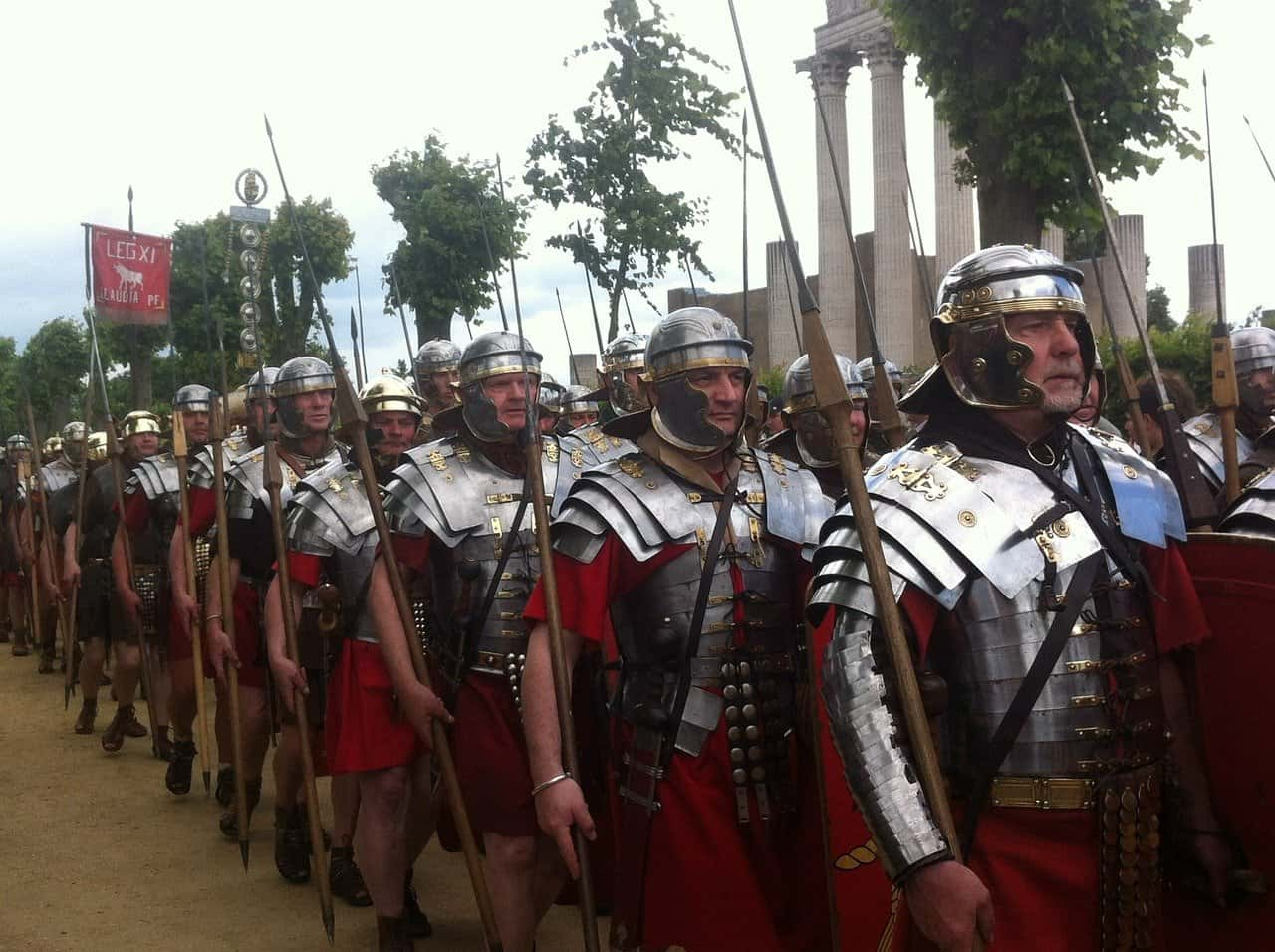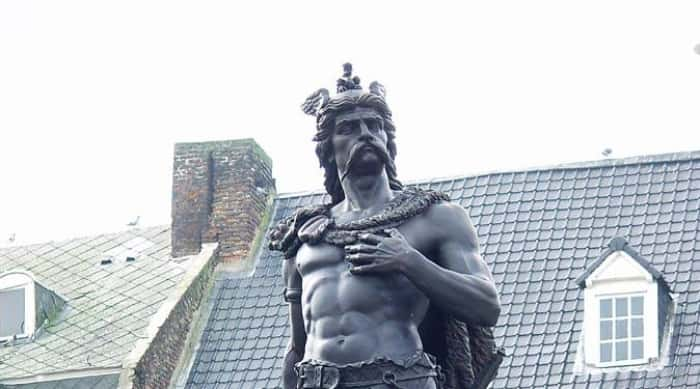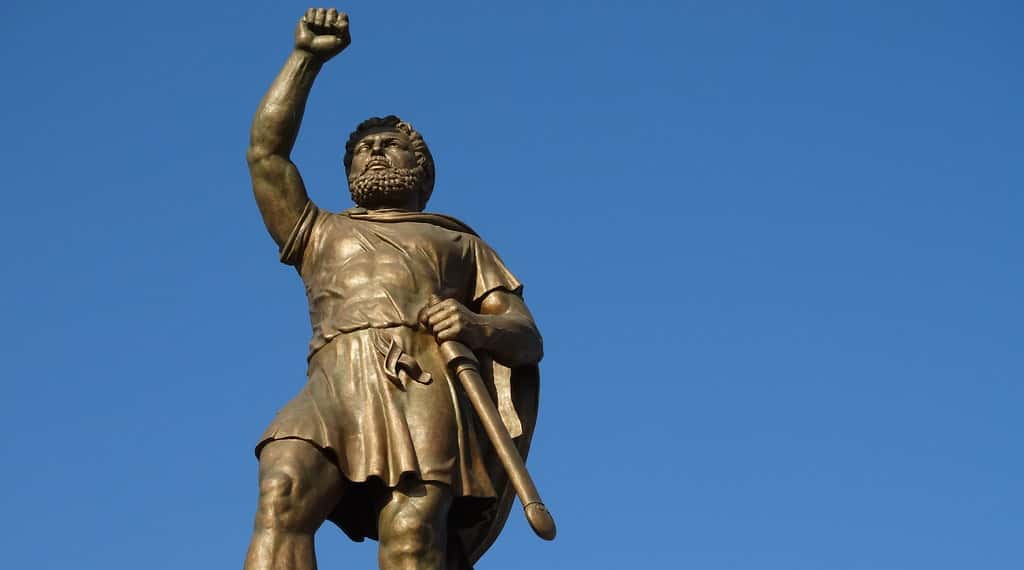It’s the age-old story of how the Roman Empire came to be what it was. They conquered barbarian tribe after barbarian tribe, including the fierce people known as the Celts. Since their defeat, they have been resurrected through cultures writing about them, be they the Romans, the Anglo-Saxons, the Greeks, or the English. Yet were they so barbaric? Were they really "defeated"? Join us as we look at the people whose name inspired a genre of music, a sports team, and an ethnic identity which endures to this day. Here are 42 facts about the Celts the British Isles, Western Europe, and beyond.
1. A Mysterious People
Due to a lack of historical evidence, coupled with the revived idea of Celtic identity, the exact origin of the Celts is hotly debated. While they're often associated with Iron Age peoples from Great Britain and Ireland, we do know that they originated in Europe, and in fact, the identity of the people in the British Isles who we call "Celts" is a source of controversy today.

2. This Is A Tomb
One prominent theory which emerged in the 19th century identified the “Celtic homeland” as being Hallstatt, in Austria. This is because of several graves found in that region which depict the earliest characteristics identified as Celtic.
3. Save The Past
Celtic languages are still spoken to this day, even after centuries of conquest, assimilation, and language evolution. Remote corners of Ireland, Wales, and France still contain populations which speak Celtic languages (these include the Gaelic languages).
4. We Loved That Southern Climate
The oldest use of the word “Celt” comes from a Greek geographer named Hecataeus. In 517 BC, he wrote of people whom he called the Keltoi, who lived near what’s now Marseille, in France. Frankly (no pun intended), we can’t fault them for hanging out around there, we hear it’s great for vacations.
 Wikipedia
Wikipedia
5. It’s All Greek To Me
It’s not known for sure if Hecataeus’ use of the word “Keltoi” was of Greek origin or if he acquired it the Celts themselves. One linguist, assuming that the word is originally Greek, proposed that it could mean “the tall ones".
6. So Who Owns The Rights?
According to Julius Caesar, the tribes living in Gaul (modern-day France) called themselves Celts. So maybe Caesar was using Hecataeus’ word as well (and given how much the Romans took from the Greeks, we wouldn’t be surprised). Another option is that the Celts themselves adopted Hecataeus’ word for them, while yet another option is that Hecataeus was using the Celts’ own word all along. We might never know for sure.
7. Around The World In 80 Days
In between 450 BC and the Roman conquests, the Celts spread all across Europe. Besides the classic locations of Great Britain and Ireland, the Celts ranged as far as Poland, Spain, northern Italy, and even Anatolia, in modern-day Turkey (more on that later).
 Wikimedia.Commons
Wikimedia.Commons
8. Who’s Bringing The Sorting Hat?
It is difficult to determine the exact formation of Celtic societies, given the passage of time, the disputed evidence, and the varied historical accounts. One recurring idea, however, states that Celtic society recognized three main groups: the intellectuals (druids, bards, and poets), the warriors, and everyone else (call them the Hufflepuff group if that makes more sense).
9. Mint Condition
Due to a lack of ancient Celtic coins, it was always assumed that the Celts operated on the bartering system. However, this cannot be fully assumed, as the Celts clearly made metal objects out of bronze or gold based on the trinkets found in Celtic burial mounds. These may have been a primitive form of currency.

History's most fascinating stories and darkest secrets, delivered to your inbox daily.
10. Don’t Look A Gift Horse In The Mouth
One area in which the Celts greatly influenced Rome was the cavalry. The Gauls were always skilled horsemen, and they would be enrolled in the Roman armies post-conquest. The Romans not only made use of the spatha (a Celtic sword meant for horsemen) but they also coopted Epona, the Celtic goddess of horses (though Zelda fans probably already knew that).
11. Holy Order
Druids made up the religious order of the Celts. They maintained sacred groves and nurtured the mysteries of the Celtic faith and lore. Druids also served Celtic communities as judges, instructors, healers, and performers of sacrifices during ceremonies. There’s far more to them than this, but they already got their own Factinate article.
12. Disturbing Decapitations
One grisly aspect of Celtic culture was their obsession with severed heads. Since the Celts considered the head to be the source of life and the location of a person’s soul, warriors saw great value in beheading their defeated enemies. Not only that, but severed heads were a motif in Celtic art and Celtic mythology. Mythic figures such as the Green Knight would even carry their own severed heads in their hands while their mouths kept speaking!
 Picryl
Picryl
13. Eye Of The Beholder
Both the Celts of Britain and Gaul were described as using chariots in battle, though the British Celts used them far longer than the Gauls did. Some would argue that this was because the chariot was outdated, and the British Celts were behind the times, but to be fair, they did manage to avoid getting conquered by Julius Caesar, which is more than the Gauls can say!
 Wikipedia
Wikipedia
14. Then The Vikings Came Around
Celtic Ireland was never invaded by the Romans, but their isolated existence came to an end with what is now called the Viking Age. The first raid on Irish soil by the Vikings that we know of took place in 795 AD on the island of Lambay. The next two centuries would see the Irish struggle with the Vikings, who raided and invaded frequently. They created settlements across the coast when they managed a footing on Ireland.
 Wikimedia.Commons
Wikimedia.Commons
15. Golden Giants
According to Diodorus Siculus, the Celtic Gauls were often blond-haired people of tall structure. One tradition regarding facial hair was that the Gaulish noblemen would grow out their mustaches “until [they covered] the mouth". Non-noblemen would either wear beards or go clean-shaven.
16. Why Did They Come Here?!
In the 3rd century BC, a great expedition of Celtic Gauls invaded the Balkans, overrunning Greece. The cause of this aggression was explained to either be a desire for land, food, or loot, depending on which historian was writing.
17. Divide And Conquer?
The first great expedition (or invasion, if you’re the Greeks) took place in 280 BC and involved as many as 85,000 warriors. These Celts divided into three groups and attacked Thrace, Macedonia, Illyria, and Greece.
18. Test My Vocabulary
The oldest example of the Celtic language yet discovered is a series of inscriptions which date back to the 6th century BC. These inscriptions are part of the Lepontic dialect, just one of several which fall under the umbrella term of “Celtic".
19. Branching Out
The Roman conquests of mainland Europe, and later Britain, led to the evolution of Celtic art and culture. While it was Romanized, traces of the original Celtic traditions would persist. There also emerged a dialect of Latin which became known as Vulgar Latin, because linguists can be snobs too.
20. Slasher, Not A Stabber
Unlike the short swords of the Romans, the Celts would carry longer swords which were used almost exclusively for hacking rather than lunging. The historians Plutarch and Polybius added an interesting detail that the sword blades of the Celts were so malleable (being made of iron) that the warriors would sometimes need to take a timeout during battles to bend their swords back into shape! Sadly, this claim is unproven, funny as it might be to imagine.
21. What If It’s Cold Out?!
Speaking of Polybius, this Roman historian was among those of antiquity who discussed how the Celtic warriors would sometimes fight unclothed in what must have been an incredible display of battle lust, or overconfidence.
22. Once Upon A Time…
The first examples of Celtic literature that we have dated back to the 8th century AD. These texts came from Ireland and describe the exploits of such heroes as Cú Chulainn.
23. Two Steps Forward, One Step Back
Going back to the grand invasion of the Balkans by the Celts, they scored mixed results when they invaded the kingdom of Macedonia, which had fallen on hard times since Alexander the Great’s demise. The then-king of Macedonia, Ptolemy Keraunos, was taken prisoner and brutally decapitated by the invaders. Eventually, however, they were driven back by Sosthenes, a Macedonian nobleman.
24. It’s On Now!
In a surprise twist to the story of the Celts in Macedonia, however, a Celtic warlord named Brennus invaded Macedonia with a fresh army. This time, Sosthenes was defeated and Macedonia was ripe for the looting.
25. I’m Just Getting Warmed Up!
Brennus wasn’t satisfied with plundering just Macedonia, however—his eye was set on Greece as well. With an army of more than 100,000 warriors, the Celts faced off against a united Greek army at Thermopylae until they found a way around the pass. Hm…why does that sound so familiar?
26. If You Mine It, They Will Invade
The Celtic societies in Gaul had access to many gold mines, much to the delight of the Romans. Coveting gold, the Romans traded silver with the Celts. However, the Celts’ downfall can be partially blamed on gold, as many speculate that Julius Caesar’s invasion of Gaul was at least partially motivated by their gold mines.
 Wikimedia.Commons
Wikimedia.Commons
27. We Are A People Of Many Gods
Celtic religions were made up of hundreds of gods, some of them so remote that only a single tribe would acknowledge them. Other gods would be more prominent and gained different names based on the region and culture. For example, there was a god of storms and lightning who was called Lleu by the Welsh Celts, Lugos by the Gaulish Celts, and Lugh by the Irish Celts.
 Wikimedia.Commons
Wikimedia.Commons
28. Christian Transition
Even in places where the Romans did not conquer the Celts, such as Ireland, the influence of Christianity would change the entire culture forever. Missionaries such as St. Patrick converted the Celts, who would themselves convert such people as the Anglo-Saxons and Vikings years later.
 Wikipedia
Wikipedia
29. What Goes Around Will Come Around
Contrary to what was once believed, the Celts weren’t the original inhabitants of Britain and Ireland. In either the Bronze Age or Iron Age (depending on which theory you believe), the Celts invaded and took over, just as so many other cultures would later do in kind to them.
30. No Need For A Ghost Story, Guys…
Ancient historians wrote of the Celtic warlord Brennus’ ultimate demise occurring when he led his army across Greece against the sacred Oracle of Delphi. Hoping to find great treasures there, the Celts were instead caught between two Greek armies. Brennus was badly wounded; he would either end up dying from those wounds or from taking his own life to avoid capture. His army was routed completely. Later Roman historians would say that they took a cursed treasure from Delphi, but modern historians generally agree this was a fabrication.
31. Let’s Find A New Home
One effect of Brennus’ invasion of Greece was that part of his defeated army was eventually hired by King Nicomedes I of Bithynia to assist him as mercenaries. As a reward, these Gaulish Celts settled in a region which was named after them: Galatia, in modern-day Turkey.
32. Linked By Chains
Like the Greeks and the Romans, the Celts practiced slavery. In fact, the Celtic words for slave (cacht or caeth) bear a resemblance to the Latin word for a captive (captus). This has given rise to a theory that the slave trade was one of the first ways that the Romans and Celts interacted with each other.
 Shutterstock
Shutterstock
33. The Celts Live On
As if a wildly popular worldwide comic book series wasn’t enough, the French Asterix series about a village of Celtic Gauls has also been adapted to forty video games, fifteen board games, and fourteen films (several of which co-star French film star Gerard Depardieu). Asterix even has his own theme park!
34. For The Modern Era
Asterix is one of the most popular Celtic figures in the history of pop culture. A comic book character of French origin, Asterix is a native Gaul whose village is the last part of Gaul that hasn't been conquered by the Romans. The long-running comic series followed Asterix’s many adventures in dealing with the Romans (including Julius Caesar), the Belgae, the Goths, the Greeks, the Britons, and pretty much anyone else living in that time period. Asterix has been translated into more than 100 languages and dialects.
35. A Hero Will Rise
One of the great and tragic figures in the history of Gaul (and the rest of the Celtic culture) was Vercingetorix. After Julius Caesar and the Romans conquered Gaul, Vercingetorix rallied the various tribes to unite for once and drive their mutual enemy out of their land. Vercingetorix was shockingly successful, even defeating Caesar himself at the Battle of Gergovia!
36. A Hero Will Fall
Sadly, the Battle of Gergovia was the last hurrah of Vercingetorix. Dealing with heavy losses from his victory, Vercingetorix retreated to the fortress of Alesia, which Caesar then besieged, building fortifications all around the fort. Though Gallic reinforcements did arrive, Caesar was a step ahead—he also had a second, larger ring of fortifications built to keep his army safe during the siege! This brilliant generalship on Caesar’s part proved too much for the Gauls and Vercingetorix surrendered to save his men from slaughter.
 Wikimedia.Commons
Wikimedia.Commons
37. A Hero Will Die
Vercingetorix was imprisoned in Rome for nearly six years. When Caesar’s accomplishments were celebrated in Rome with a “triumph” (basically a parade and party), Vercingetorix was wheeled out before the Roman masses. Afterward, Vercingetorix was strangled in his cell, presumably while screaming “FREEDOM!”
 Wikimedia.Commons
Wikimedia.Commons
38. Now It’s Personal!
In the area known as Belgium today, Julius Caesar’s campaigning in 54 BC led him and his army to face a food shortage. To get supplies, they demanded that a local Celtic tribe called the Eburones give up part of their harvest to the Romans. Since food was scarce for them too, the Eburones were understandably miffed. Ambiorix, their leader, led a revolt against the Romans, slaying an entire Roman legion and five cohorts in battle. That’s as many as 9,000 of the best soldiers of their day.
39. Talk About A Turn Of The Tide…
Unfortunately for Ambiorix, despite all the Romans that the Celtic Belgians put to the sword, Julius Caesar wasn’t one of them. He spent the next few years massacring the Eburones until they were completely wiped out.
 Pixabay
Pixabay
40. Wasn’t Expecting That…
In a surprising twist, Roman historians wrote that Ambiorix and many of his men managed to escape Caesar’s wrath. They fled across the Rhine and were never heard from again. Since the Roman Empire never expanded across the Rhine, there’s no record of what happened to Ambiorix. He would fade into obscure history until the newly independent country of Belgium, in search of national heroes, turned the defiant Ambiorix into an icon, conveniently ignoring the fact that he abandoned his tribe to genocide.
41. This One’s For The Ladies
Celtic Law in Boudicca’s time was surprisingly forward thinking when it came to women’s rights. Women could rule, they could participate in politics, religion and the arts, and had control of who they married and the right to divorce under certain circumstances like ill-treatment. In the case of sexual assault or harassment, a woman had the right to take vengeance herself. While there were no specific guidelines for what her revenge might look like, there are stories of Celtic queens having heads cut off and poisoning the offender.
The Romans didn’t give a wit about Celtic law, and according to their laws, the warrior Queen named Boudicca and her daughters had no rights to any of her husband Prasutagus’ wealth or kingdom, and the Romans certainly weren’t going to jointly own anything with a woman. As if it wasn’t enough that they immediately pillaged his house after his passing, they allegedly whipped Boudicca and assaulted her two adolescent daughters. No wonder she wanted revenge! She would go on to lead a brutal rebellion against the Roman forces.
42. Good Answer
When Alexander the Great took charge of Macedonia’s throne, one of the groups of people who sent envoys of peace were the Celts. According to the later writings of Alexander’s general Ptolemy, the future Pharaoh of Egypt, Alexander drank with the Celtic ambassadors after the formalities were done, and he asked them what the Celts feared most. If Alexander was hoping to hear them say they feared him most, he would have been disappointed—the Celts replied that they only feared that the sky might fall down on their heads.








































